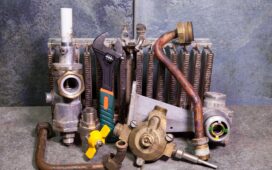When using a large crane at a construction site, it is crucial to prioritize safety and adhere to proper procedures. Here are some steps to take when using a crane at your job site:
Conduct a Pre-Operation Inspection: Before using the crane, perform a thorough inspection to ensure that all components, including the hoisting mechanisms, control systems, safety devices, and structural elements, are in proper working order. Check for any signs of damage or malfunction.
Verify Proper Crane Setup: Ensure that the crane is set up on a stable and level ground. Check the ground conditions, such as soil stability and load-bearing capacity, to prevent any instability or sinking during operation. Follow the manufacturer’s guidelines for proper crane assembly and setup.
Plan and Assess the Lift: Evaluate the load to be lifted, including its weight, dimensions, and center of gravity. Assess the surrounding area for any obstacles, such as power lines, buildings, or other structures, which could interfere with the lift. Develop a detailed lift plan, considering factors such as crane capacity, radius, and required rigging.
Train and Assign Competent Operators: Ensure that operators are properly trained, licensed, and experienced in operating the specific type of crane being used. Regularly provide refresher training and certification updates. Assign a designated signal person to communicate with the crane operator during lifts.
Establish Communication Protocols: Maintain clear and effective communication among the crane operator, signal person, and other personnel involved in the lift. Use standardized hand signals or reliable two-way radios to relay instructions and warnings.
Rigging and Slinging: Use appropriate rigging equipment and techniques to securely attach the load to the crane’s hook. Inspect slings, chains, or other lifting devices for wear, damage, or inadequate capacity. Ensure proper load balance and rigging techniques to prevent load shifts or failures during the lift.
Monitor Weather Conditions: Keep a constant watch on weather conditions, including wind speed, precipitation, and visibility. Adhere to safe operating limits specified by the crane manufacturer and regulatory standards. Suspend crane operations if conditions pose a risk to safety.
Implement Safety Barricades and Exclusion Zones: Establish clear exclusion zones around the crane to restrict access to unauthorized personnel. Erect appropriate barricades and warning signs to ensure that workers and others maintain a safe distance from the crane’s swing radius.
Regularly Inspect and Maintain the Crane: Schedule routine inspections and maintenance of the crane as per the manufacturer’s recommendations and applicable regulations. Keep accurate records of inspections, maintenance, repairs, and modifications.
Document Accidents and Seek Expert Assistance: In the unfortunate event of a crane-related accident, immediately document the incident, including photographs, eyewitness statements, and any other pertinent evidence. Report the accident to the appropriate authorities and contact a crane expert witness to conduct an independent analysis of the incident, determine its cause, and provide expert testimony if necessary.
By following these steps and prioritizing safety at every stage, construction site operators can help ensure the safe and efficient use of large cranes. Regular training, proper maintenance, and professional expertise contribute to reducing the risk of accidents and maintaining a safe working environment.







